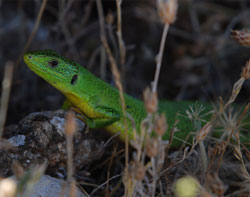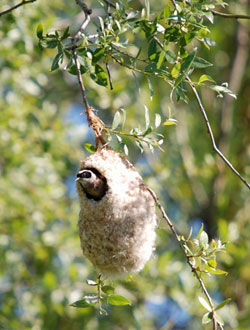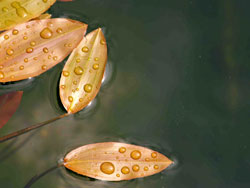Nature
 The wetland of Agras is one of the few remaining active peatlands in Greece. The peat layer exceeds 20 m in certain locations and taking into consideration that peat formation is a very slow natural process, the development of such a thick layer must have occurred through many thousand years.
The wetland of Agras is one of the few remaining active peatlands in Greece. The peat layer exceeds 20 m in certain locations and taking into consideration that peat formation is a very slow natural process, the development of such a thick layer must have occurred through many thousand years.
The local wealth of animal and plant species is directly connected to the abundance and distribution of wetland habitats, but also, to those of the surrounding uplands.
Reedbeds form the predominant wetland habitat type. They are characterised by the presence of reeds, rushes and sedges, and provide valuable habitat for invertebrates, reptiles and amphibians as well as water birds. Wet meadows occur at the west part of the wetland, consituting an important habitat for herons and passing wading birds. Patches of calcareous fens with Cladium mariscus, a priority habitat for E.U., are formed on permanently waterlogged places of the wet meadow area. They are unstable and sensitive ecosystems that depend on the maintenance of a specific water level and are threatened either from hydrological changes, or from the expansion of reedbeds and agricultural fields .
 The aquatic vegetation is abundant at the open water habitats especially at the waterways that cross the wetland. It mainly consists of pondweeds, musk grasses and water lilies, creating valuable fish spawning habitats.
The aquatic vegetation is abundant at the open water habitats especially at the waterways that cross the wetland. It mainly consists of pondweeds, musk grasses and water lilies, creating valuable fish spawning habitats.
Clumps of riparian trees, poplars, willows and alders, remnants of the pre-existing wetland, occur in several spots and along the canal banks, constituting important refuge habitats for water birds.
Cherry trees predominate at the surrounding agricultural land, while, forests, pastureland and meadows cover the hillsides, providing appropriate nesting or foraging habitats for raptors and passerines.
Man
The wetland is surrounded by three communities: Agras, Vrytta and Nisi, forming part of the Edessa Municipality.  The discovery of ancient pile dwellings at the area of Edessaios springs, as well as other archaeological findings, at the hill of Filokastro, dated back to the classical age, indicate that the co-existence of man and the wetland ecosystem has a history of many thousand years.
The discovery of ancient pile dwellings at the area of Edessaios springs, as well as other archaeological findings, at the hill of Filokastro, dated back to the classical age, indicate that the co-existence of man and the wetland ecosystem has a history of many thousand years.
Since the ancient times, the area was associated with the city of Edessa, acting both as external border and as a passage to the upper Macedonia. The ancient Egnatia road, crossed the area. The same passage is presently used by the national driveway from Thessaloniki to Florina and the railway line which also crosses the wetland area.
Since the middle of the previous century, the water of Edessaios river provided the waterpower for the operation of the local watermills and of the very important textile-mill factories of Edessa.
Today, the cherry tree cultivation and stock-raising are important activities for the local economy, while the operation of Agras hydropower plant, that employs many inhabitants, has played a significant role for the socio-economic life of the area.
The co – existence
Water is the driving force supporting the precious wetland biodiversity, as well as several activities of vital importance for the local community.
After giving life to the wetland ecosystem (1), water reches the hydropower plant of  Agras (2), where it is used for energy production.
Agras (2), where it is used for energy production.
From there, it flows to Edessa town to feed the urban waterways and the waterfalls (3), the main local tourist attraction.
Then it flows through a second hydropower plant (4), and after that it is collected into a reservoir (5) that regulates the irrigation of 5000 ha of agricultural land. What remains unused, continues its route to the sea (6). In this way, a valuable cycle of multiple and beneficial for both man and nature water uses is being completed.











